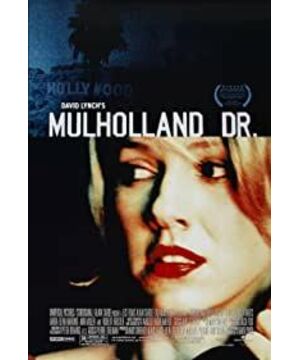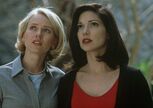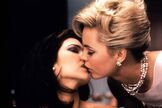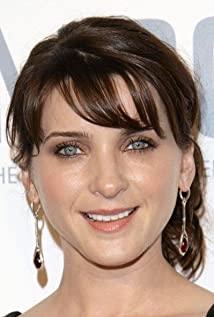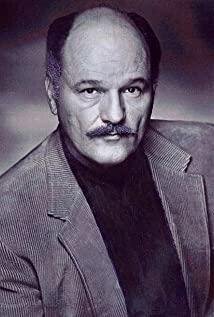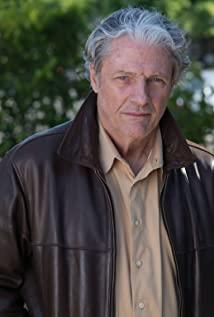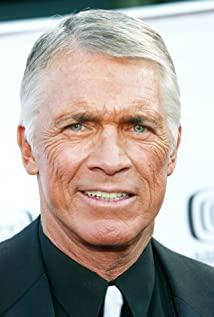The film structure: The first paragraph: Memories 02:01:40 - 02:18:59 Diane and Camilla lesbian. Diane was sad to see Camilla and Adam together. Diane's invitation to their banquet was actually an engagement. Diane recently finally made up her mind to hire a killer to kill Camilla. Second paragraph: Reality 00:01:51 - 00:02:20 Diane had just seen the blue box and fell asleep in a trance knowing that Camilla was dead. 01:56:46 - 02:01:32 Diane wakes up. Find the key. stimulated again. 02:18:59 - 02:21:14 Diane finally committed suicide because of fear, pain, anxiety... The third paragraph: dream 00:02:20-02:01:40 dream. Detailed analysis, by video timeline. 00:01:00 Hue. The color of the image is very important in David Lynch's films, and he values it very much. His films usually pay attention to the atmosphere. His films tell a story, but they often don't exactly describe a piece to the audience. But through the creation of the atmosphere, the audience can personally feel the emotion he wants to express. Just like an impressionist painting, when you stand in front of the painting and look at it, you can know what it depicts, but when you get too close and stare at the painting, you will find that the objects on the painting are all Without outlines, it is often the accumulation of color blocks, and the boundaries are blurred. David's movies are like this, you can't find that clear line, but you know what he's talking about, you know what's going on, and it's emotional. The color tone is mainly dark, and it gives people a very jumpy feeling and is not harmonious. Purple, blue... The use of colors makes people feel very absurd, eccentric, and unreliable. It hints at the lack of security and the unease of the protagonist. Scene: A lot of people are dancing, you can understand that it's a game and our heroine is honored in it, or you can understand that it's Hollywood life, and the heroine yearns for it. At this time, the heroine is around her uncle and aunt, who will appear again in the film later. 00:01:51 Scene: Subjective shot, a woman walks to the side of the bed and falls down, the camera suggests that she has lost her mind and is dreaming. 00:02:23 Scene: Sign on Mulholland Drive. 00:04:23 Scene: Mercedes-Benz car. The woman in the car (Rita). This scene will appear later. The man in black in the car was about to shoot Rita but was involved in a car accident. Rita escapes, but loses her memory. Reality: Diane accepts Camilla's invitation to dinner, but also suffers a disaster she doesn't want to face. 02:08:44 Similarity: Simply put, it is the psychological phenomenon of one person substituting himself into another person for some reason. Rita at this time is actually the real Diane. 00:10:00 Scene: Rita, who lost her memory, hid in a strange house. That's where Betty will live. 00:12:27 Scene: Conversation of two men. A man recounts disturbing dreams to his psychiatrist. At this time, the lens is shaken, and the shaken lens will make people feel less secure than the fixed lens, and it will make people feel like a dream. Note: This is a subjective shot. In other words, it is possible that this is a double dream. You cannot see yourself in a dream, but the director must use an objective lens in order to present the dream, but why is a subjective lens used here? It is very likely that it is a double dream. But in this way, the analysis of the whole film has to be further advanced, and it is easy to go to extremes. 02:17:36 00:16:00 Scene: The man said that there was a devil behind the wall, so the two of them went to see and found a monster with a strange shape. Reality: This man is the man Diane saw when he was dealing with the killer. Freund believes that a dream is the fulfillment of a wish. The analytic formula of dreams is: dream = repressed desire + disguised satisfaction. That is to say, a certain dream is always used to express a certain wish of the dreamer, but the satisfaction of this wish may be disguised and not so clear at a glance. And in the dream, the suppressed pain will also manifest in other ways. At this time, Diane's pain is released in another way. Once this pain touches Diane, once it tries to manifest, Dinae will show Obvious unease, such as the shaking of the line of sight at this time. And Dinae's pain comes from the blue box, which was given to her by the beggar behind the wall, and getting the box means that Camilla was killed by her hired killer. 00:16:54 Scene: A man calls the person above to report "The girl is still not found." The girl refers to Rita. 00:17:43 Scene: The phone on the bedside table rings, next to a red light. Who does this phone belong to? Whose bedroom is this? The prompt will appear many times after the movie. 00:17:51 Scene: Betty leaves the airport. Holding an old lady I just met. 00:19:31 Scene: The old lady and her husband are sitting in the car and laughing happily. But the background music is weird. It is not in harmony with the emotions of the characters in the picture. Conflict, absurd. Reality: Diane tried to get rid of her pain, but it didn't help. 00:20:30 Scene: Betty arrives at the place her aunt left her. CoCo came out to receive her. Reality: CoCo is Adam's mother and appears as a close person in the dream because Betty's reaction at the banquet left a good impression on Betty. 02:11:43 00:23:24 Scene: Betty finds Rita taking a shower. Rita at this time is helpless and neurotic. Betty is in the capacity of a protector. At this time, Betty thought that Rita was a friend of his aunt. After that, Betty introduced to Rita that she had come back from Canada, and with the help of her aunt who had been engaged in acting, she wanted to become an actor in the United States. Reality: Why did the two meet for the first time in the shower? Lesbian. In reality, the state of the two people is exactly the same as in the dream. Diane wished she could be what she was in her dreams, or that Betty in her dreams was more of the Camilla in reality, and Diane was the restless Rita. Many people in this dream are actually Diane himself participating in their emotions. It's like the man who told a psychiatrist about his dreams. 00:28:01 Scene: Adam comes on stage. He was a director, and he discussed the shooting with a group of people, only to be asked to use the designated actors for the film. 00:29:37 Scene: A photo of a woman asking for the woman to be the heroine. Reality: She shows up at the party as the person who has an affair with Camilla. 02:11:27 Adam refused to agree, lost the directorship, and has been unlucky since then, such as returning home to find that his wife had an affair with someone else. Reality: Diane naturally hopes that her rival Adam will be as unlucky as possible. In the dream, her wish has been fulfilled. 00:36:38 Scene: Two men are discussing murder. One of the men killed the other, but was repeatedly discovered and exposed, and had to kill again and again to cover up the fact of his murder. Reality: Diane is anxious because she's worried that she's hired a murderer. At this time, Diane is actually in the situation of a killer, which is causing panic. 00:43:47 Scene: Rita opens her carry-on bag and finds a large stack of money and a key. That key is a clue, and it will have a lot to do with the plot of the entire movie. Reality: Diane hired a murderer to kill Camilla at a very cheap price. She subconsciously felt that Camilla should be worth more, but it was actually a manifestation of guilt and guilt. 00:49:20 Scene: Adam, the bad guy, comes home and sees his wife cheating with another man, but notice that the background music is quite cheerful. This is again the same situation as before, where the content of the picture does not match the music. And here it is, David Lynch - not only director, writer, cameraman, editor, producer, special effects and animation designer, but also sound designer, lyricist, painter and performer. Lynch said: "I love music ... I realize that many of the laws of music are very similar to the laws of film, and in music, these laws are expressed in terms of rhythm, theme, atmosphere. For me, putting a It's normal for a piece of music to be the basis for the entire structure of a film... The more I go into my writing, the more I realize that there are real miracles in music that are connected to images." In Lynch's Film Music is also an important part of the atmosphere rendering. And many times the understanding of the plot has played a role in prompting. 00:54:12 Scene: Rita and Betty try to find out who Rita is. They were discussing while reading the newspaper in the cafe. The waiter came here. It said "Diane" and Rita stared at it for a long time. It seemed to evoke some memory. She told Betty she knew the name. Reality: Diane is Betty's name in reality, and why did Diane think of Betty's name? It's 02:16:11 in real life dealing with the killer. Here we can clearly see that Rita is conscious in the dream, and can be reminded of reality by the plot in the dream, just like Diane saw the waiter's badge at the time. And Betty in the dream can't, that is to say, at this time, the identity of Betty in the dream is actually Rita. Or Rita in more ingredients. 00:56:05 Scene: Betty opens the phone book to look up Diane's name in order to recall Rita's memory and calls. The automatic answering voice on the phone reminds Rita of something, she says she recognizes this voice. 01:00:00 Scene: Adam was abandoned by the company because he did not change roles, and was penniless. His assistant told him to find a cowboy. Say he wants to see him, right away. 01:02:40 Scene: The odd neighbor Louis knocks on the door, leaving odd language. Reality: Diane's anxiety. There must be all kinds of accidents to break the peaceful state of her dream now. That is Diane has been in a state of unease. And Diane already knew the truth, so there were many hints in her dreams that wanted to evoke her repressed reality. 01:08:17 Scene: Cowboy asks Adam to re-cast the role, saying that he will be looking for many actors to audition, but he can only choose the default one. Successfully persuaded Adam. It also led to Betty's audition after that. "If you do well, you can see me twice". Bought the foreshadowing for the final appearance of the dream. Reality: I think it's because Diane's dream is gradually out of her control, so I want a novelist to create a person, but that person gets his own life, so I don't follow the plot given by the author To develop is to assert yourself arbitrarily. So Diane forced a cowboy to control the situation, and the cowboy also appeared at the banquet. The banquet is very important to Diane, and it is also the direct reason why she hired a murderer to kill Camilla, so many characters in the dream are based on the banquet. 02:15:06 01:19:27 Scene: Betty's acting has been affirmed by everyone. Reality: Betty craved affirmation in her heart. 01:23:35 Scene: Betty and Adam fall in love at first sight. But then Betty was about to leave and hurried off the set. Reality: In reality, Camilla and Adam are lovers, so it can be seen that part of Betty in the dream is actually Camilla in reality, but Diane naturally doesn't want them to be together, so she forces Betty to leave. Separate the two. 01:30:48 01:32:05 Scene: Betty and Rita find Diane's house, number 12 turns out to be Diane's neighbor's house, and the neighbor tells her that she has something to come back from Diane's place. Reality: It's true, Diane did borrow something from a neighbor and didn't pay it back. 01:58:10 01:35:50 Scene: Body found at Diane's house. Around 55, freeze the appearance of the corpse. Reality: That corpse is what Rita is, aka Camilla. 01:39:45 Scene: Lesbian Reality: Diane herself was frightened by the corpse in the dream, she didn't know it was Camilla in the dream but knew subconsciously that she needed comfort from Camilla. 01:42:24 Scene: Rita sleeps on "Silence" in Spanish. Rita opened her eyes and kept speaking the same lines, and asked Betty to go with her. So Betty decided to go out with Rita. 01:44:41 Scene: The camera in this section is advancing. This subjective shot is actually quite terrifying, showing Diane's extreme fear. 01:45:30 Scene: The theme of exposing fantasy is being played out in the theater. This short few minutes of drama is actually what the whole movie has to say. Grandpa didn't actually play his trumpet when he came out, but no one would doubt that he was just pretending to play. Reality: What is the fantasy revealed, the moment when Diane is about to wake up and get close to reality. 01:47:24 Scene: Betty shakes violently. Reality: In a dream, if someone pushes down or falls from a height, the body's response is that there will be twitches in the legs, and Betty's shaking at this time is actually the twitching of Diane who is sleeping. Generally, the convulsions during sleep are caused by the stimulation in the dream. That is, the dream is about to end and the truth is about to come. It can also be seen from here that in fact Betty is also Diane's clone in the dream, otherwise it is impossible to have a violent physical reaction. 01:51:15 Scene: The singer is also an illusion, often blinded by the illusion in front of him and unable to see the reality. 01:52:05 Betty found the handbag next to the seat. There was a blue box in the handbag, and there was obviously a triangular keyhole on the blue box. Reality: This blue box is evidence of Camilla's death and evidence of Diane's crimes. 01:54:20 Scene: Betty disappears and Rita finds the key in the bag and opens the box. Advance, dark. Reality: The truth is finally awakened that Betty and Rita are actually part of Diane. 01:55:59 Scene: The last part of the nightmare, pay attention to the people on the bed before and after the cowboy wakes up. In the next shot, the people are rotting. Reality: The nightmare is over. 01:56:46 Diane is in bed, proving waking up, echoing the cowboy's wake up call. 01:58:10 The female neighbor goes back and forth to get what Diane borrowed. Corresponding to the previous dream. 01:58:48 Close-up of the key. Pay attention to the ashtray. 02:00:04 Diane made coffee, thinking that she saw Camilla, but she did. The two selves are actually two selves split in the dream. 02:01:40 The time indicated by the ashtray, the time goes back to before, when the lesbian. It must have been Diane who saw the key being stimulated and recalled everything that had happened before. From here, it's another paragraph. 02:03:13 With the director and Camilla, it can be seen that they are actually a couple. And when they were intimate, Diane was always there. 02:07:22 Camilla asks Diane to come out. 02:08:05 Mulholland Drive's sign. 02:08:44 The camera is the same as Camilla at the beginning, so Rita in the dream is Diane in reality. 02:11:27 Camilla brought Diane to a banquet with Adam, and Adam's mother appeared, which was CoCo. 02:12:18 Diane talks about his life experience. 02:14:46 The woman who appears is the woman designated as the protagonist. 02:15:06 Cowboys. 02:16:11 Diane asks the killer to come out and hire him to kill Camilla. Pay attention to the brand of the waiter, which is the origin of the name Betty. As you can see, the price is not too high to buy Camilla's life. The killer gave Diane a key, saying it would open something to prove it. 02:17:36 Passerby A is the one who had the nightmare. 02:18:07 The wall, and the beggar behind the wall, gave her that blue box, proving that Camilla was dead. At this time, Diane's deceased aunt and uncle came out of the box. Diane had hallucinations at this time because she couldn't accept Camilla's death, and the blow was too big. 02:18:59 Close-up of keys, coffee mug. The time returns to the place corresponding to 01:58:48. Diane looked at the keys on the table in horror. 02:19:50 At this time, she had hallucinations. At 02:20:20, her uncle and aunt came back. In her madness, she committed suicide. Pay attention to that light. That nightstand. Suicide is not so much smoke. 02:21:15 Beggars appear, blurry, smoke and theater-like. To imply that everything is a play, an illusion? 02:21:48 Corresponding to the title, it is a beautiful vision and fantasy and the bustling metropolis of the United States with Camilla. Diane's story ends. Note 02:21:57 Back to the theater, the end of the play. Another understanding is that everything is a drama, and there is nothing left when it disappears, and who knows that what they see is not an illusion. Diane's story is the same. A small comment [About David Lynch] The Chicago Sun-Times said in a review of the film A Love Story In The City Of Dreams, this is a movie that needs to give up on yourself, if you need logic, then go to other movies. But in fact, this film is not without logic. It has a very meticulous logic, and its logic exceeds that of many other films, but its logic is hidden under those appearances, and it is not clear at a glance. There are many directors of narrative, but not all of them can make a dream. The dream is that there must be both absurd and unrealistic imagination, and reality as the foundation. His logic runs through, like the veins of a leaf, even in every branch and tip. After watching this movie, I think Lynch is very similar to Kafka. He narrates dreams truthfully with extraordinary skill, guiding you like a guide to the absurd world. And when you peel off this seemingly unworldly shell, the deeper you go inside, the more you can feel a strong sense of reality and rationality. Another feature of Mulholland Road is its infinite possibilities. Calvino said that once an image in memory is fixed by words, it is erased. The more precise the description, the more precise the frame to fix the development of things, and the precise description can fix those infinity, thus stifling the imagination. In many movies, the director expresses what he thinks, but does not give the audience space to think about what he thinks. In those movies, the director's thinking became the only correct answer, and there are so many standards for measuring things, how can there be the only standard for judging things. When a creator spreads his work to the audience, he loses the right to explain and explain. Everyone will only understand what they see according to their own experience, just like looking in a mirror. , see the self first. The director is the one who first created the mirror. He also has another task to hold the mirror and decide what it sees. He needs to let people see their inner emotions and thoughts more and more clearly. He achieves his original intention when there is an emotional resonance in his work. In Mulholland Drive, every image is a fork in the road, and there are as many paths as possible, and each person will make his own choice according to the difference of the individual, and will always be closer to his inner emotions. Lynch, in all his interviews, still refused to confirm any interpretation of Mulholland Drive's plot logic or character morals, only smiling slyly: "Audiences are spoiled by the simple logic of Hollywood, they should try. Use your own brains, trust your own feelings, and don’t pursue standard answers.” Finally, it should be mentioned that although David Lynch’s film works are bizarre and psychedelic in style. But he also has films with a very different style. It's "Bend of the Road". These two movies are like black and white complementing each other. Only by seeing this one can we discover the charm of that one more. The style of this film is straightforward. Some people may think Lynch's film is very fancy, but this film is particularly plain but very touching. When I first saw Lynch's Mulholland Drive, I thought it was just a coincidence that such a film was made, but after watching "Road Straight Road Bend", his ease of retraction made me believe that he is indeed a master. The last thing to mention is that although David Lynch's film works have a strange style and are mostly psychedelic. But he also has films with a very different style. It's "Bend of the Road". These two movies are like black and white complementing each other. Only by seeing this one can we discover the charm of that one more. The style of this film is straightforward. Some people may think Lynch's film is very fancy, but this film is particularly plain but very touching. When I first saw Lynch's Mulholland Drive, I thought it was just a coincidence that such a film was made, but after watching "Road Straight Road Bend", his ease of retraction made me believe that he is indeed a master. The last thing to mention is that although David Lynch's film works have a strange style and are mostly psychedelic. But he also has films with a very different style. It's "Bend of the Road". These two movies are like black and white complementing each other. Only by seeing this one can we discover the charm of that one more. The style of this film is straightforward. Some people may think Lynch's film is very fancy, but this film is particularly plain but very touching. When I first saw Lynch's Mulholland Drive, I thought it was just a coincidence that such a film was made, but after watching "Road Straight Road Bend", his ease of retraction made me believe that he is indeed a master.
View more about Mulholland Drive reviews


